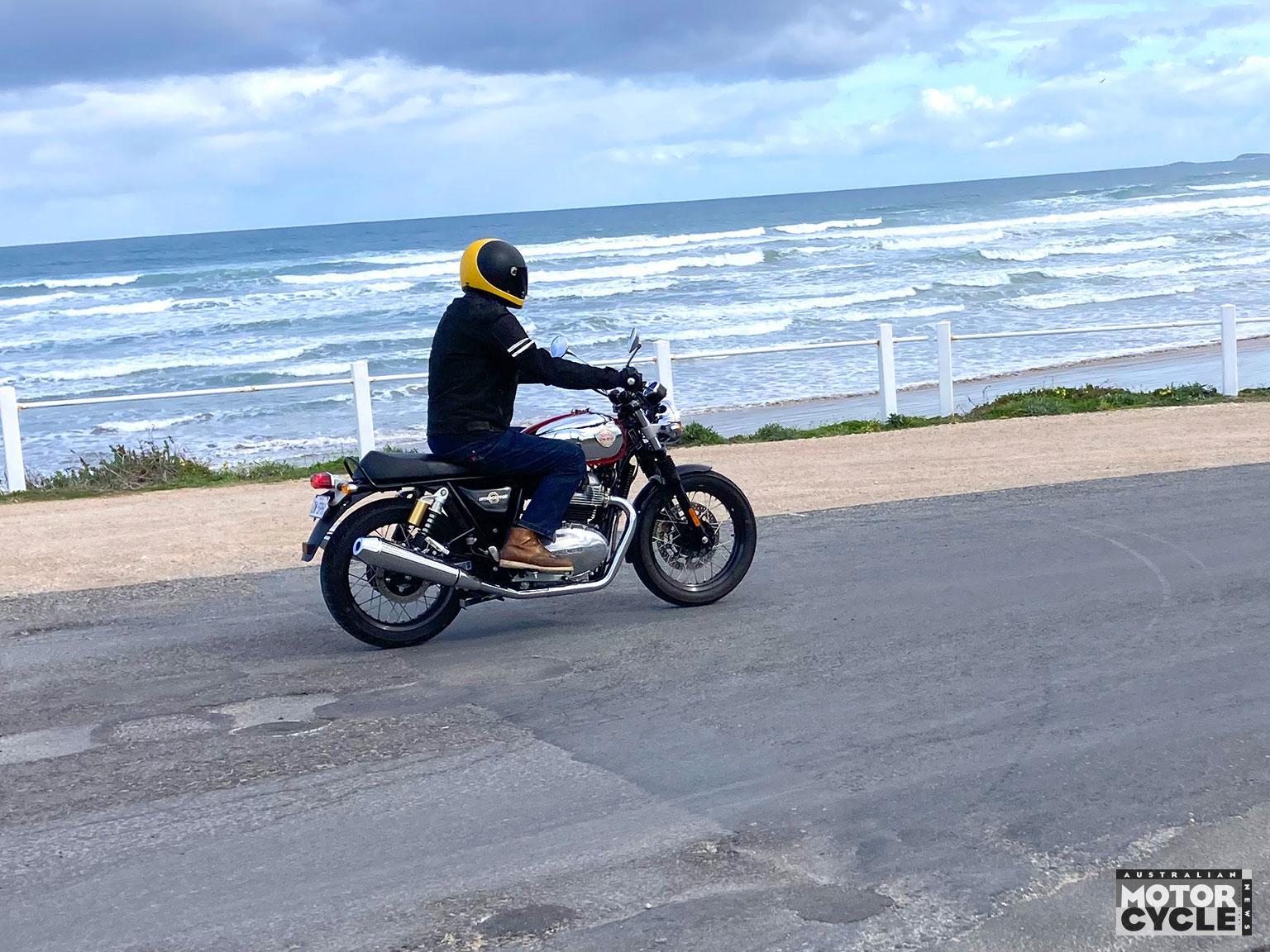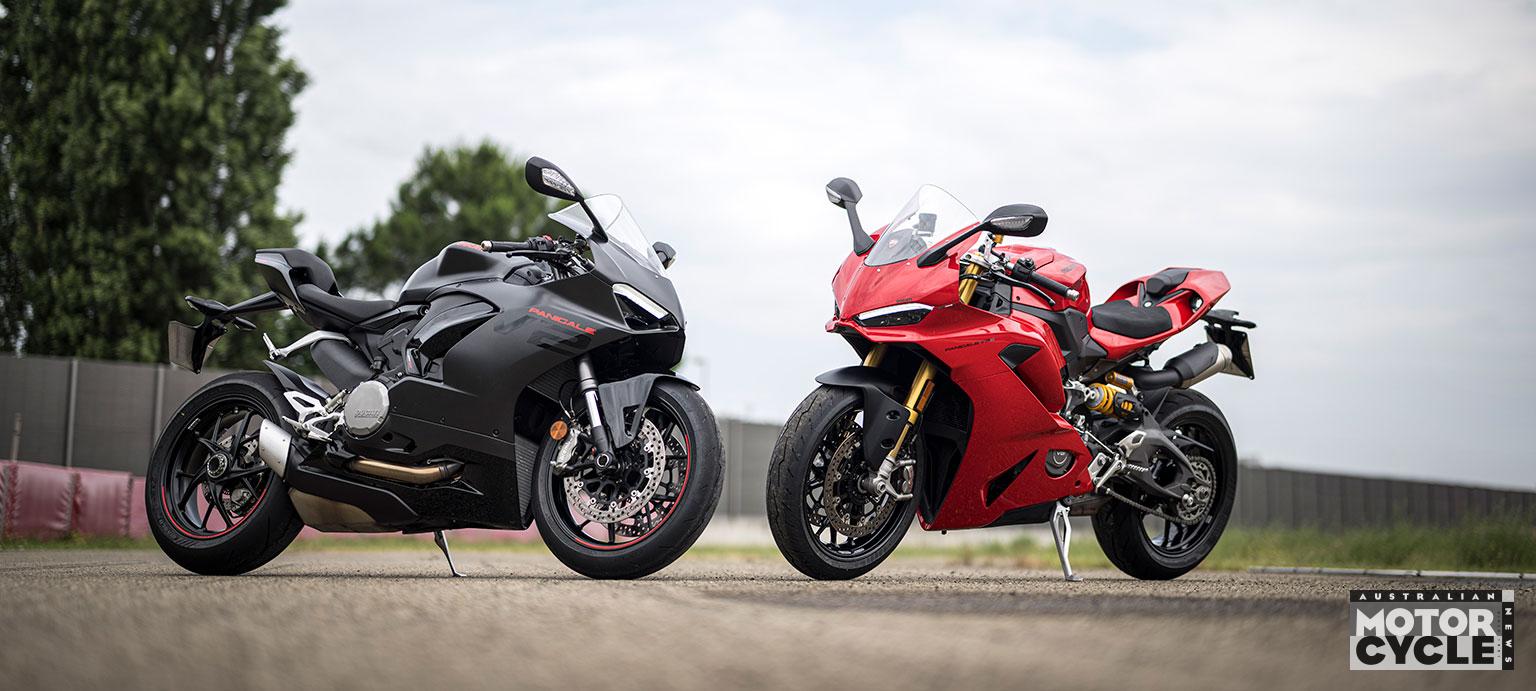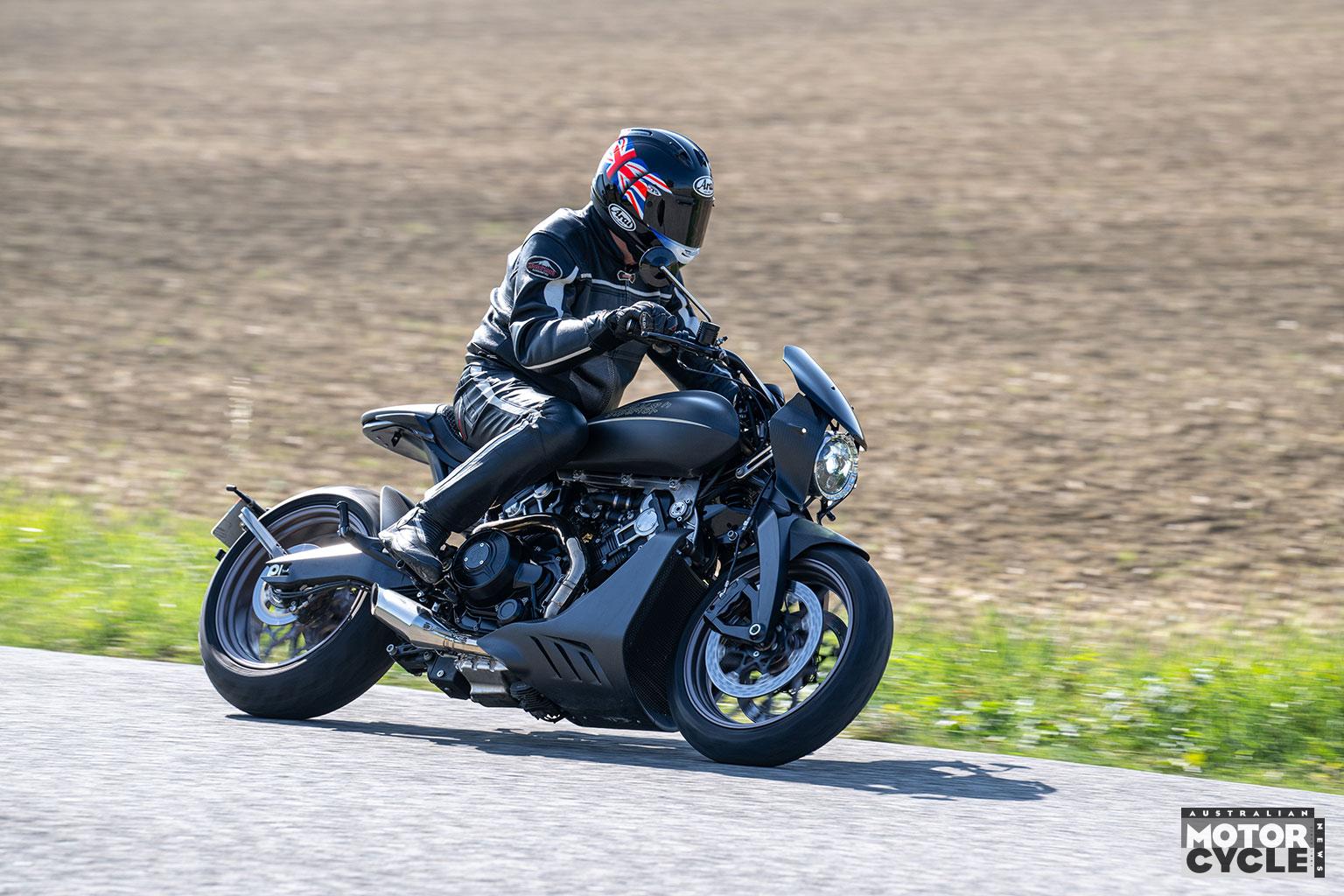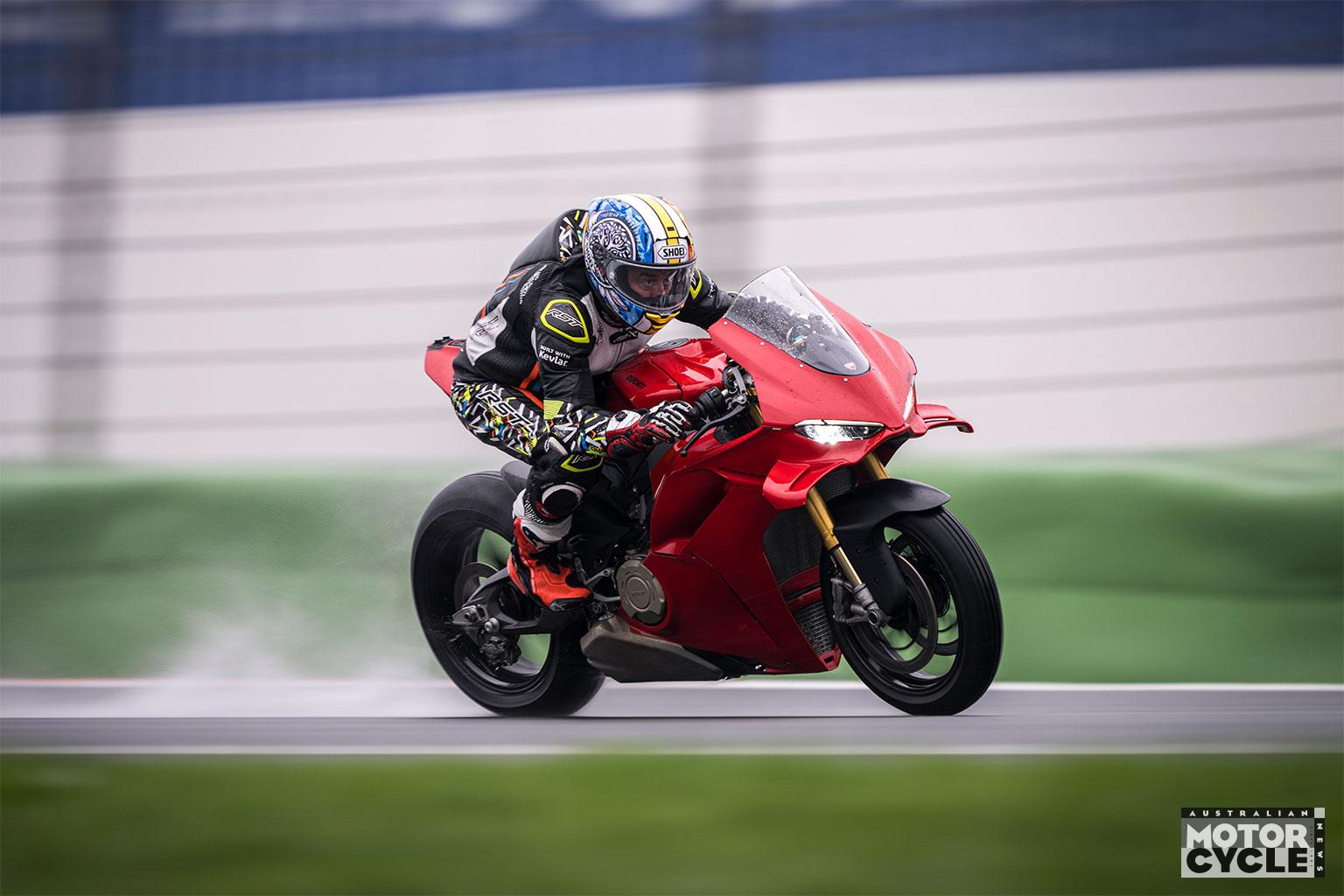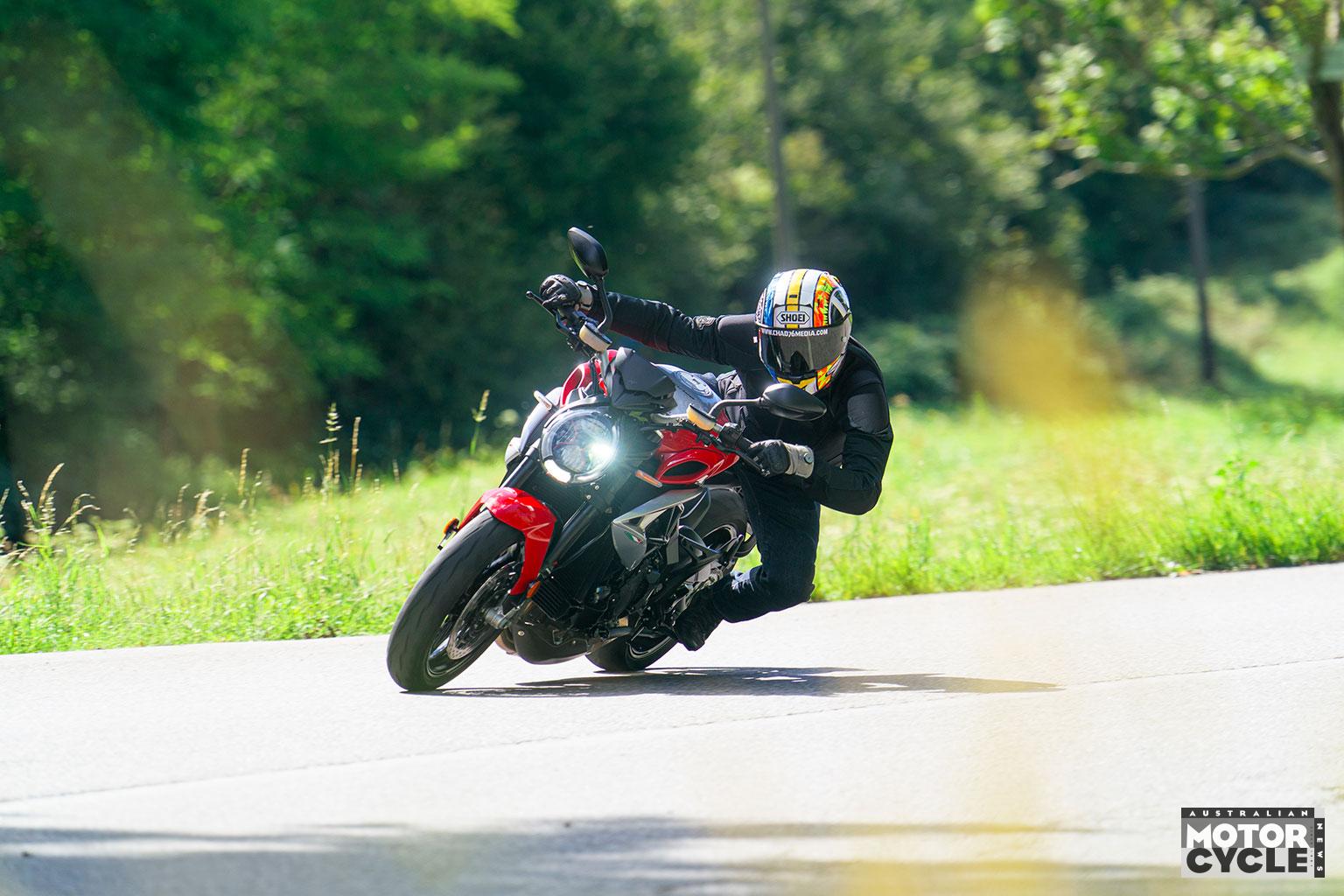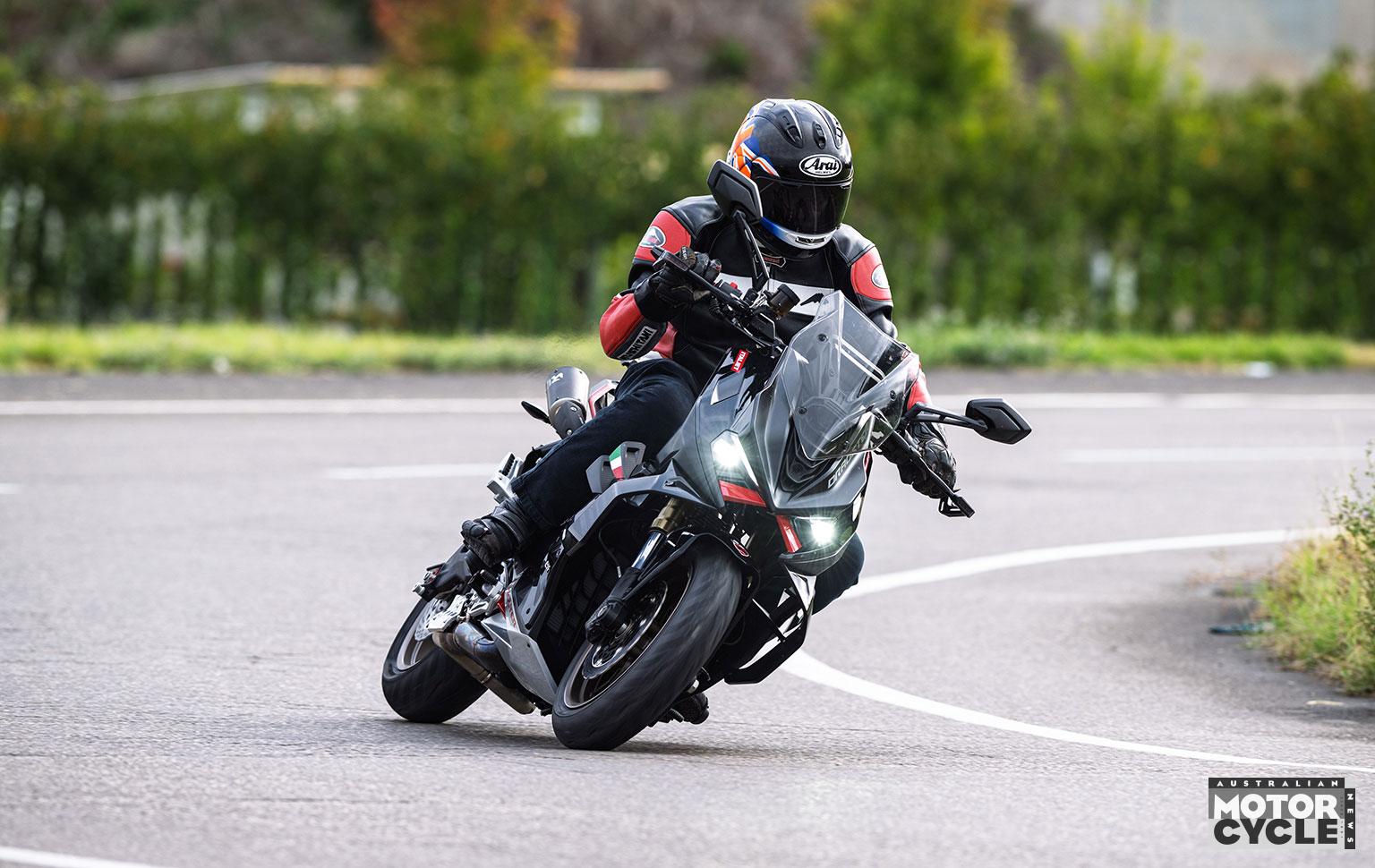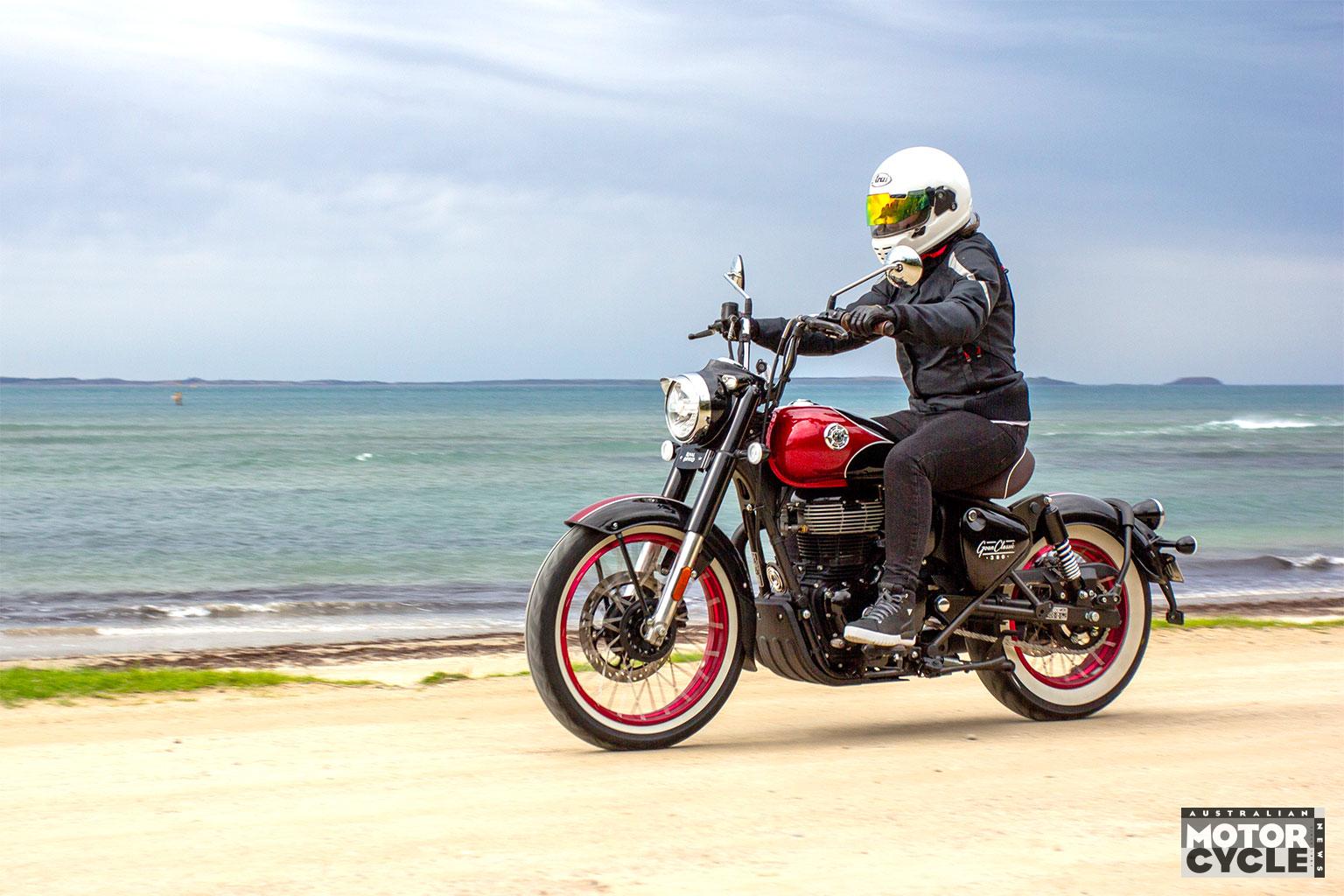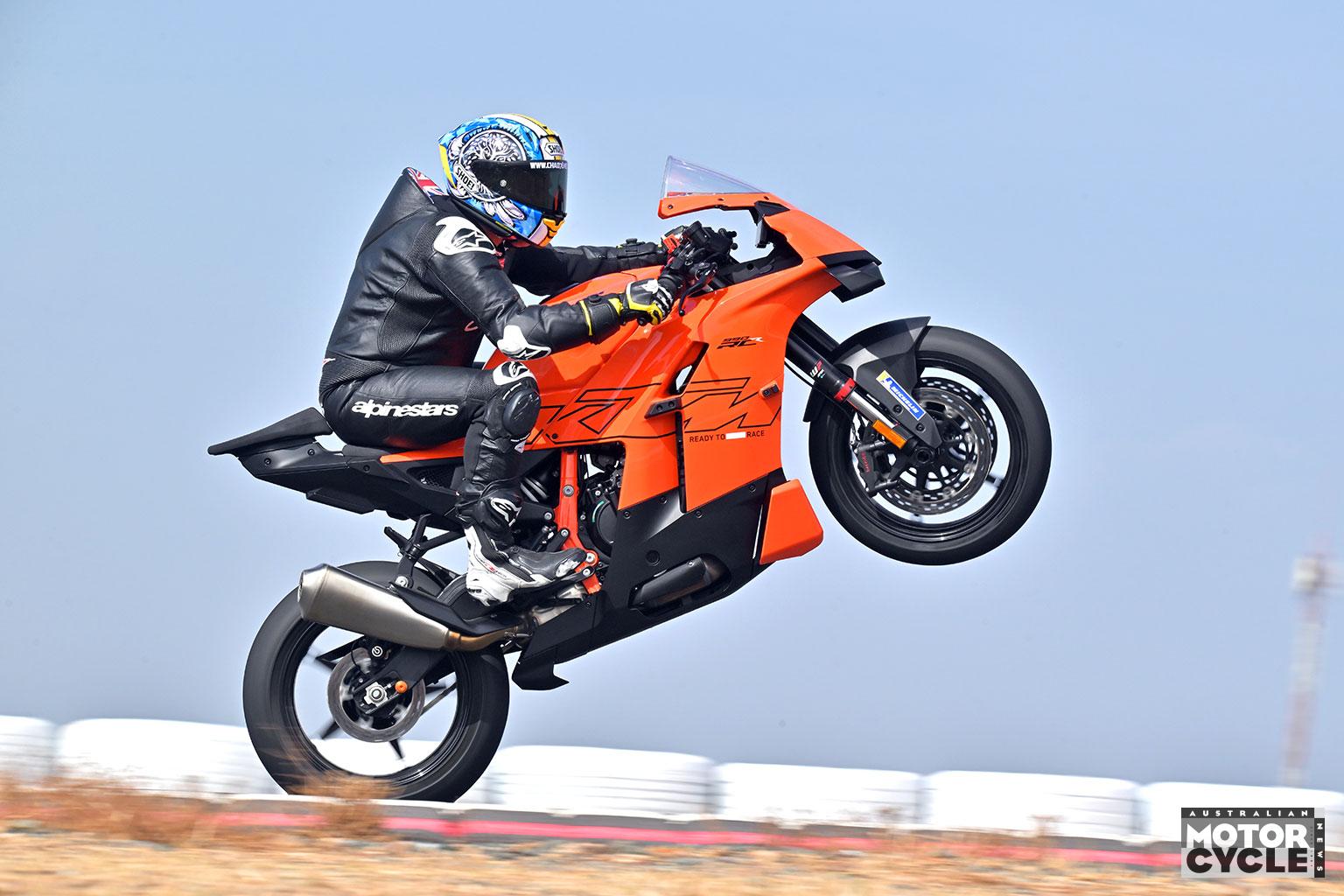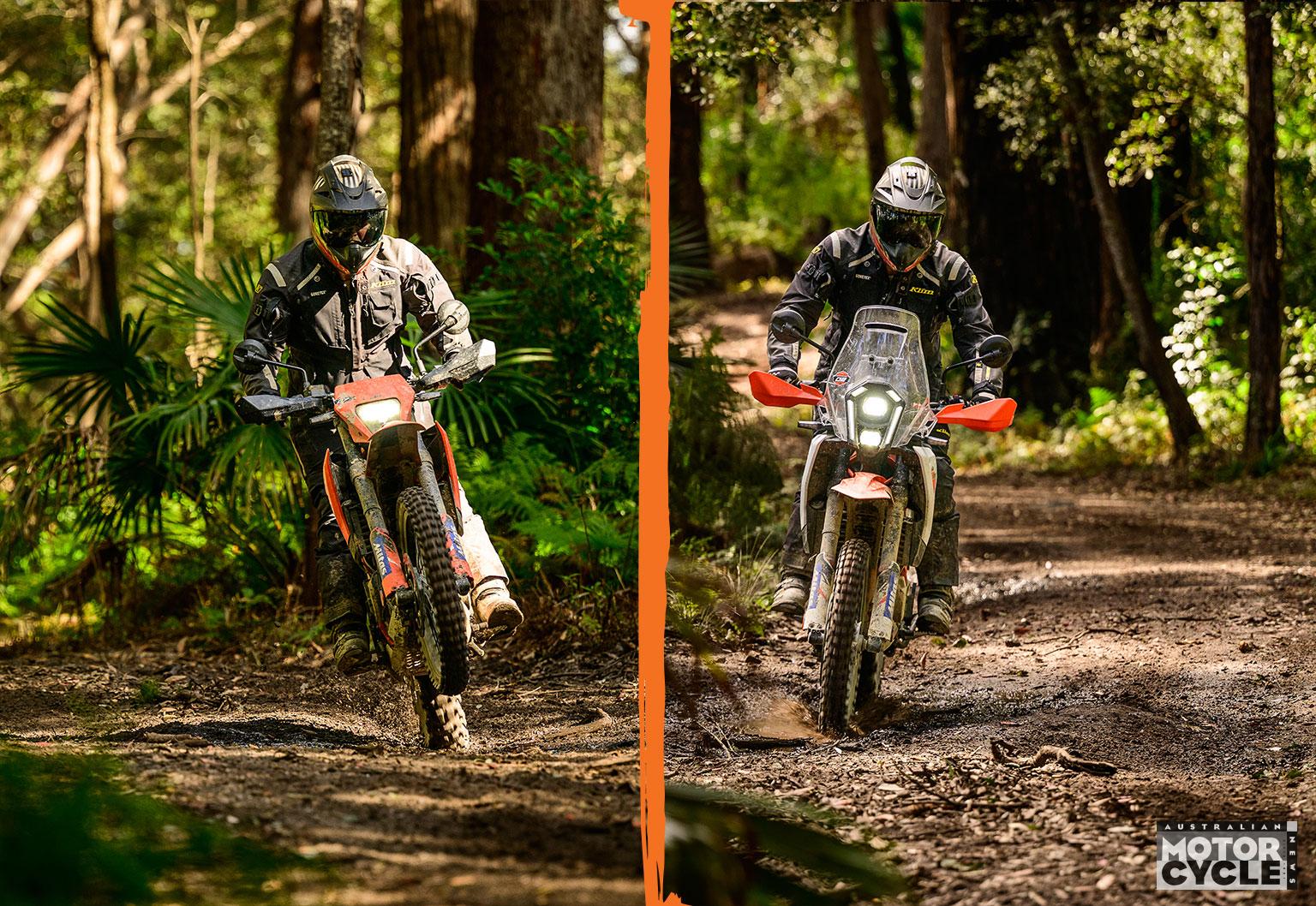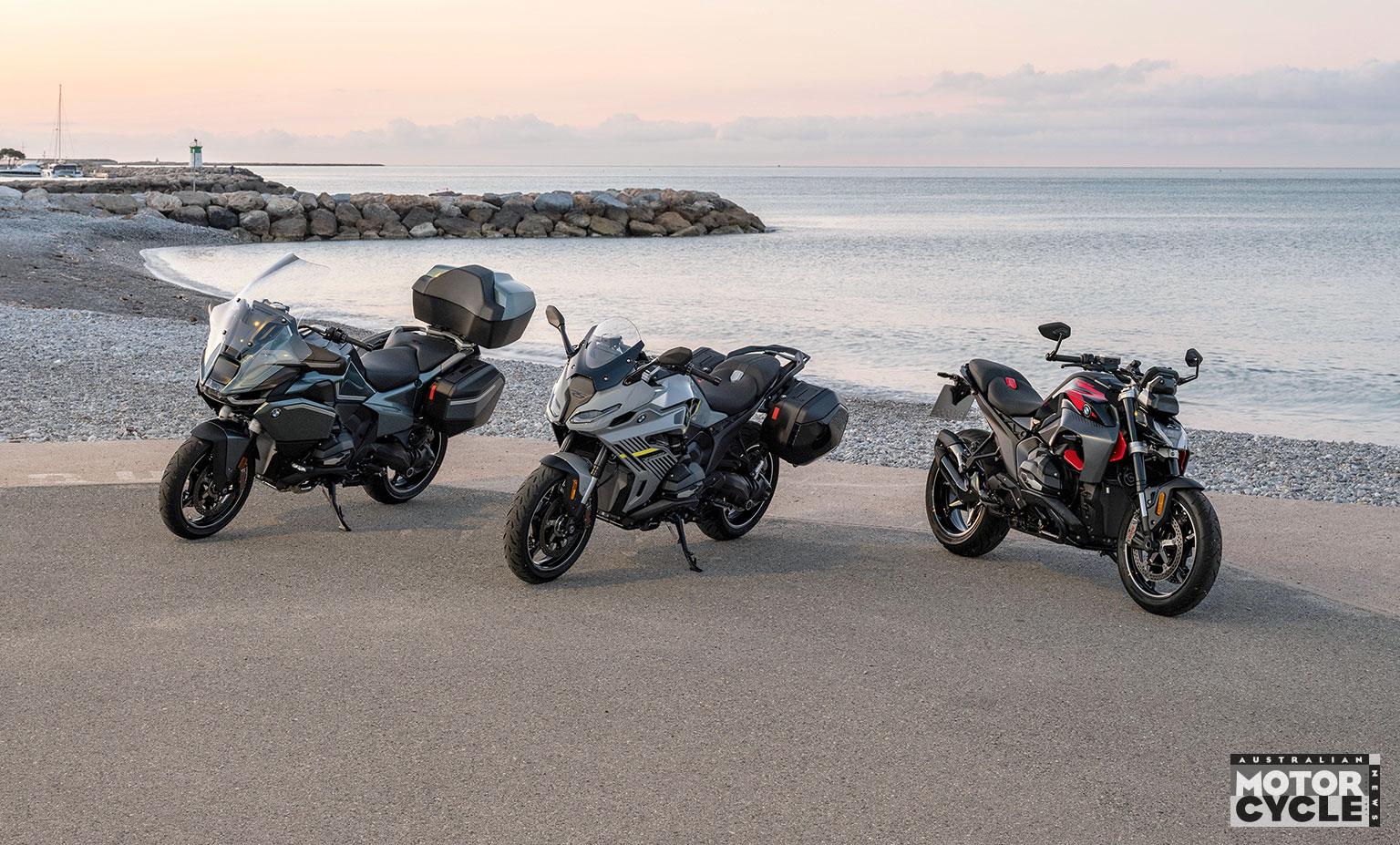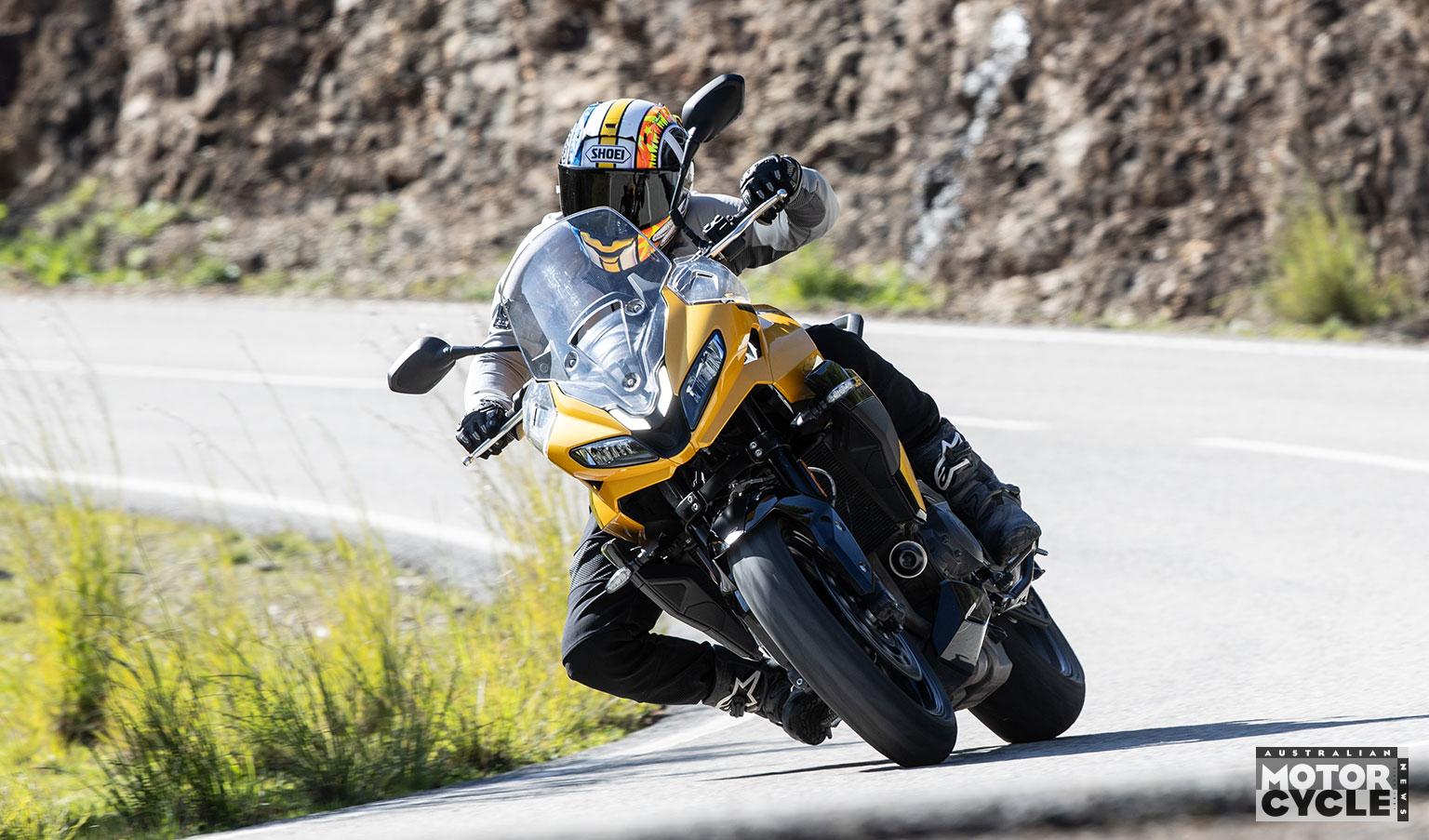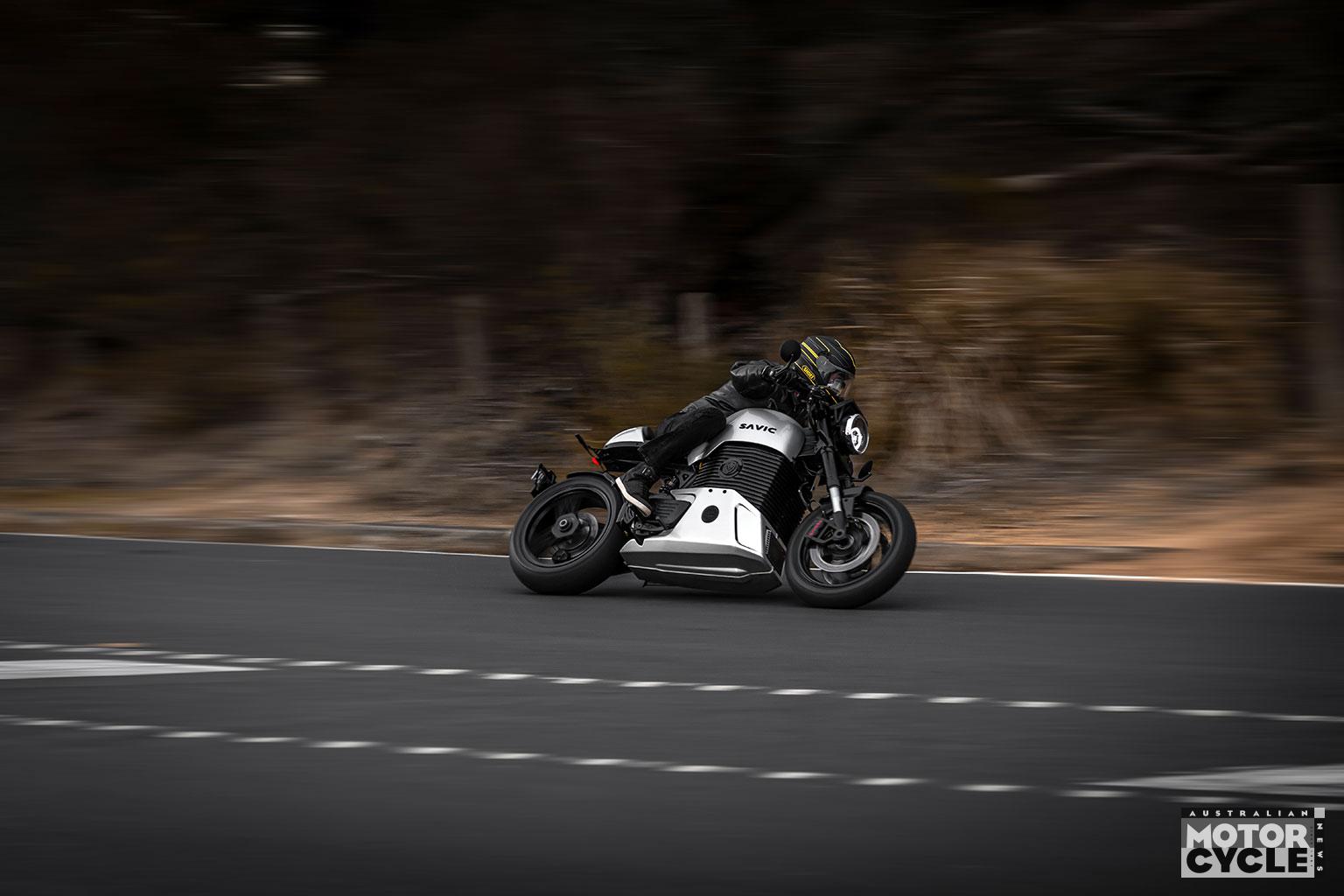If there’s one thing Suzuki has become very good at in the last few years, it’s building unpretentious motorcycles which represent really good value for money. And while the V-Strom 800 hasn’t quite ticked all the boxes I’d expect and like it to, it’s still a well-appointed, practical and high-value offering. In my mind, a base-model adventure tourer – regardless of the brand – is the sports-tourer for those who want a more upright riding position, less bodywork and a few more options on ways to get from A to B. More practical than a traditional sports-tourer, there’s more luggage options, more wind protection and, while the 19-inch front wheel doesn’t quite offer the same feel and feedback as a 17-incher would, they can generally be pushed through any set of twisties at more or less the same clip as anything else.
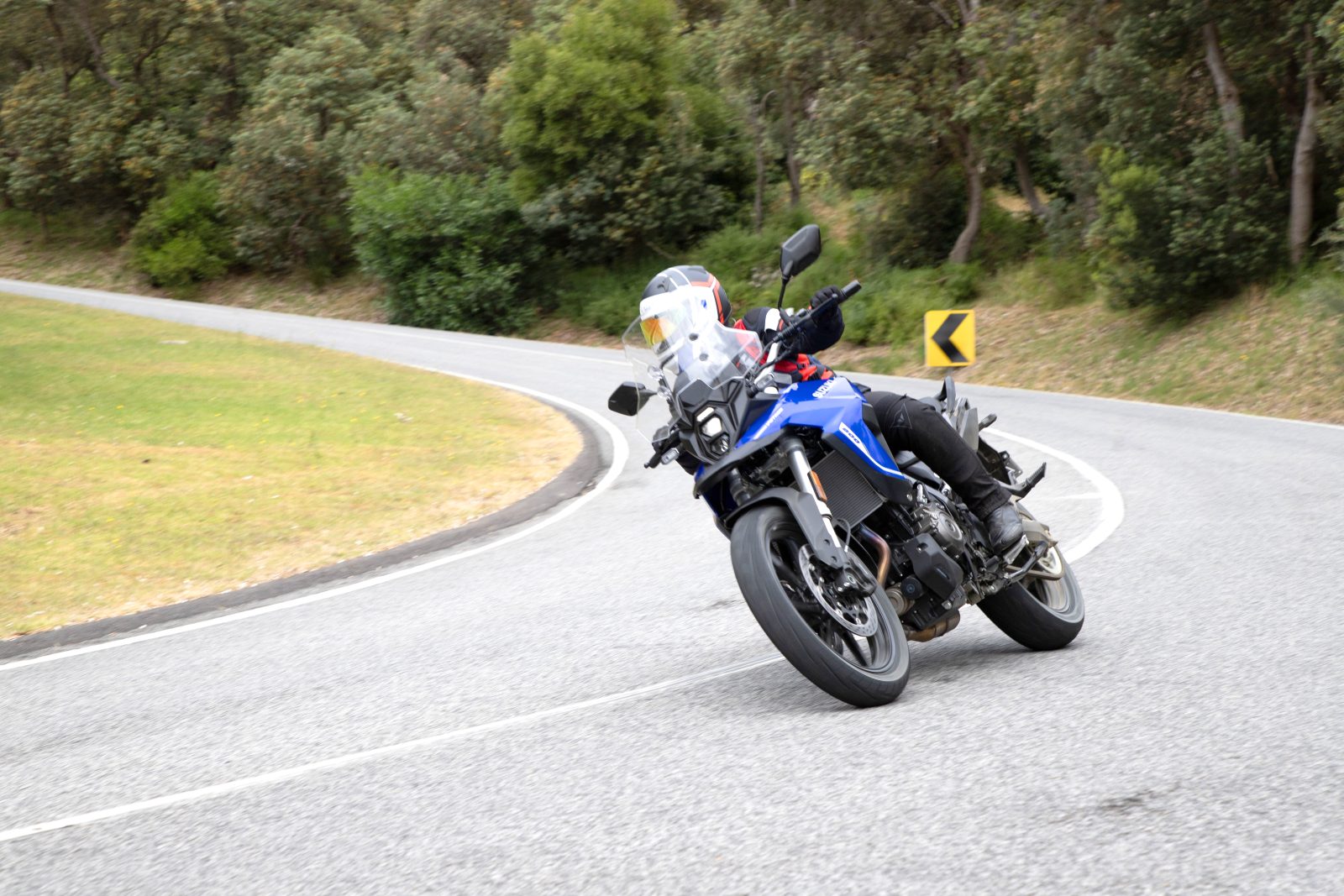
Released after its dirt-focused DE sibling (AMCN Vol 72 No 20), the $17,490 (ride away) V-Strom 800 is the platform’s base or road-focused model. As well as gaining a 19-inch (cast aluminium) front wheel instead of the DE’s (wire-spoked) 21-incher and a more road-oriented brake package, there’s less travel in the suspension, which in turn drops the seat height, while the single-piece handlebar is both narrower and mounted farther forward for ergonomics better suited to the rider who’s intending to spend more time seated than standing.
Likewise, the footpegs – which are aluminium instead of steel – are set higher and farther back compared to the DE’s, while the adjustable windscreen offers slightly more protection.
It’s powered by the same 776cc parallel-twin engine as Suzuki’s growing range of 800cc machinery which, as well as the DE, includes the GSX-8S and the GSX-8R – and it’s a beauty. Spritely and responsive, helped no doubt by some well-considered gear ratios, there’s 78Nm of torque peaking at 6800rpm, while the 62kW (83hp) of power peaks 1700rpm later at 8500rpm.
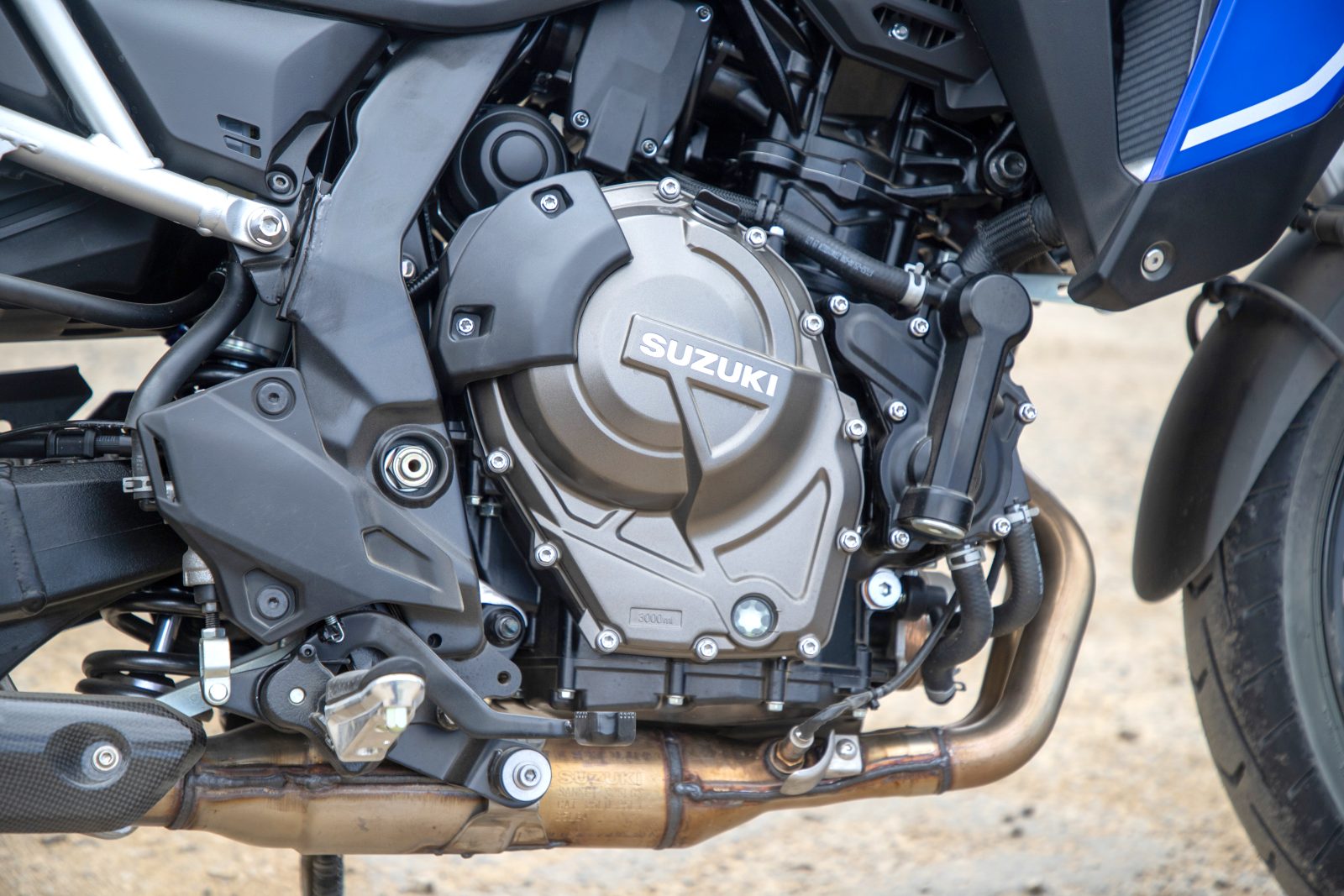
I mentioned torque first, because in this application it does feel more relevant. The 270-degree crank is designed to mimic the engine characteristics of a V-twin (and to no doubt appease former owners of the original V-twin-powered V-Stroms), but the clever bit is how Suzuki has given it the torquey qualities of a V-twin while ensuring the engine – at any revs – remains silky smooth and free of vibrations.
My testbike had Akrapovic’s titanium slip-on muffler fitted to it (see sidebar), which gave it a crisp bark that’s a dead ringer for my Yamaha TRX850 – another parallel-twin with a 270-degree crank. The 28-year-old Yamaha is nowhere near as smooth as the Suzuki, though. It’s all to do with
a patented design that puts two balancers 90 degrees to and equidistant from the crankshaft, which not only work to cancel the vibrations from each cylinder, but their equal and opposite distances also work to stamp out any coupling vibrations. On top of that, Suzuki says it also plays a role in making the engine more compact, which helps give the Strom a narrow waist improving its accessibility to a wider range of riders.
In terms of numbers, I’m only 164cm tall and I find the standard 825mm seat height really manageable, however there are optional lower (805mm) and higher (855mm) seats in the accessories catalogue. What really impressed me was the level of protection afforded by the minimal front bodywork. There was one particularly early-morning ride that left my fingers noticeably cold and it made me realise that I wasn’t getting any cold air to either my upper or lower legs – impressive considering I was only wearing a pair of jeans.
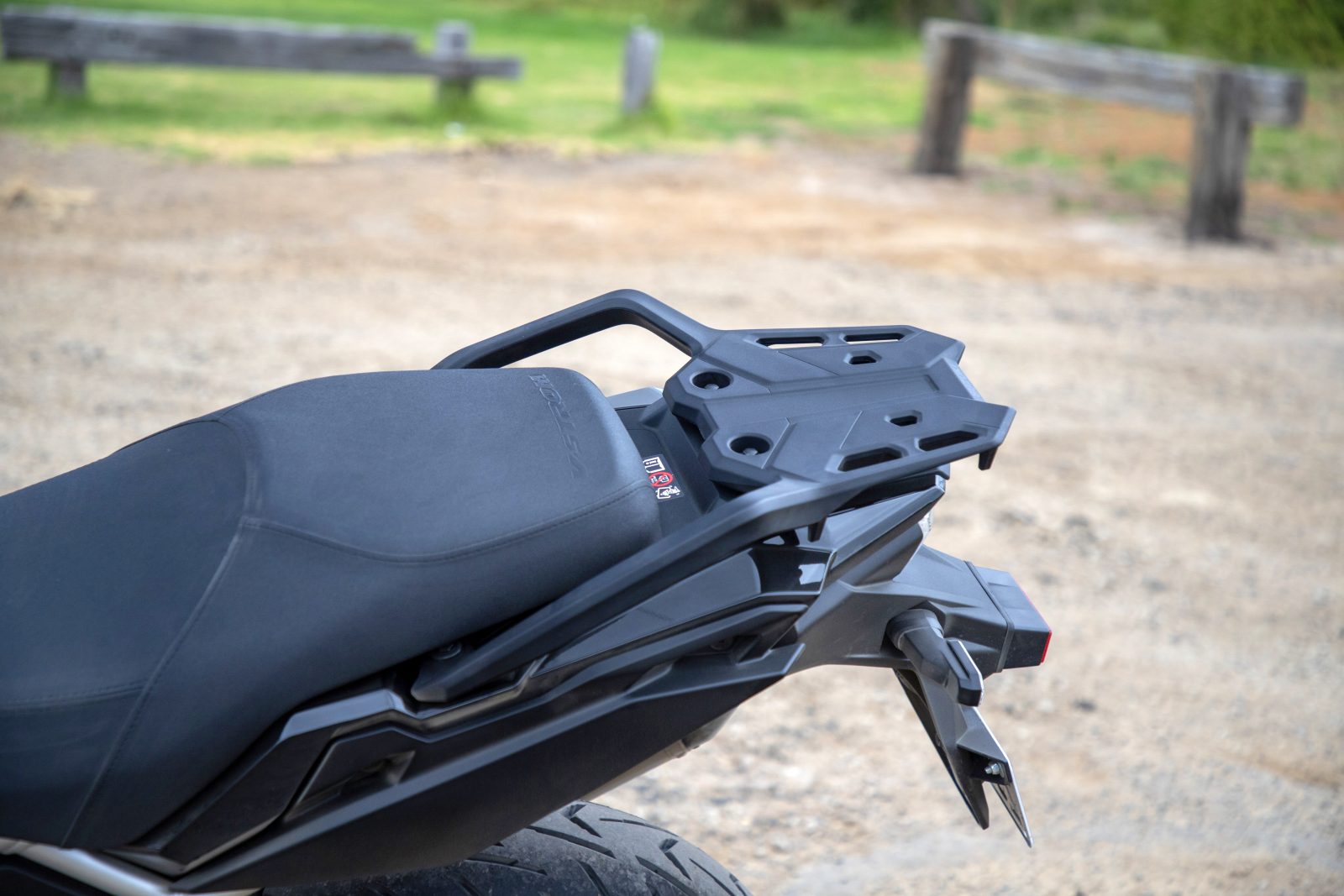
But it was that same morning after an hour and a half on the highway that I really couldn’t understand Suzuki’s decision to leave cruise control off the V-Strom’s list of appointments. Here’s a bike designed to cover kays; it boasts a ride-by-wire system, Suzuki has cruise control systems at its disposal, so it’s an addition whose benefits would far exceed the cost of inclusion. I’d understand if it was a cost-cutting measure, but you can’t even option your V-Strom with the technology through the accessories catalogue.
And since I’m complaining, Suzuki has made the windscreen height adjustable, which in itself is admirable. But to do so, you need to dig out your Allen key and undo four bolts. Once that’s done you only have an adjustment span of three centimetres. So as long as you see it as a one-off adjustment customisable to your height, rather than a screen you can adjust depending on the conditions on any given day, then you’ll probably be happy to have it. And as I said, for my height, the protection provided is excellent.

Another stand-out feature for me is the V-Strom’s brakes. The base model gets a pair of radial-mounted four-piston Nissin calipers over the DE’s twin-piston units and both their feel and power are far better than I was expecting for a $17.5k bike. There’s nothing lacking in their performance, especially when you take into account they’re gripping slightly smaller than average 310mm discs.
The ABS system, though not lean-angle sensitive, does have switchable intervention modes for when you alternate between the asphalt and the dirt, with Mode 1 dialling back the intervention over the stricter Mode 2.
Speaking of modes, the V-Strom 800 gains the same electronics package as the DE version, albeit without the off-road specific Gravel mode, which puts some really useful functions at the rider’s fingertips. There are three engine maps in A, B and C, which Suzuki likes to call Active, Basic and Comfort – think Sport, Road and Wet. All peak at the same power output, they just offer a different throttle response in getting there. I found B the most pleasant to use in all types of conditions – instead opting to dial up the ABS and traction control interventions if the conditions got wet, slippery or dusty.
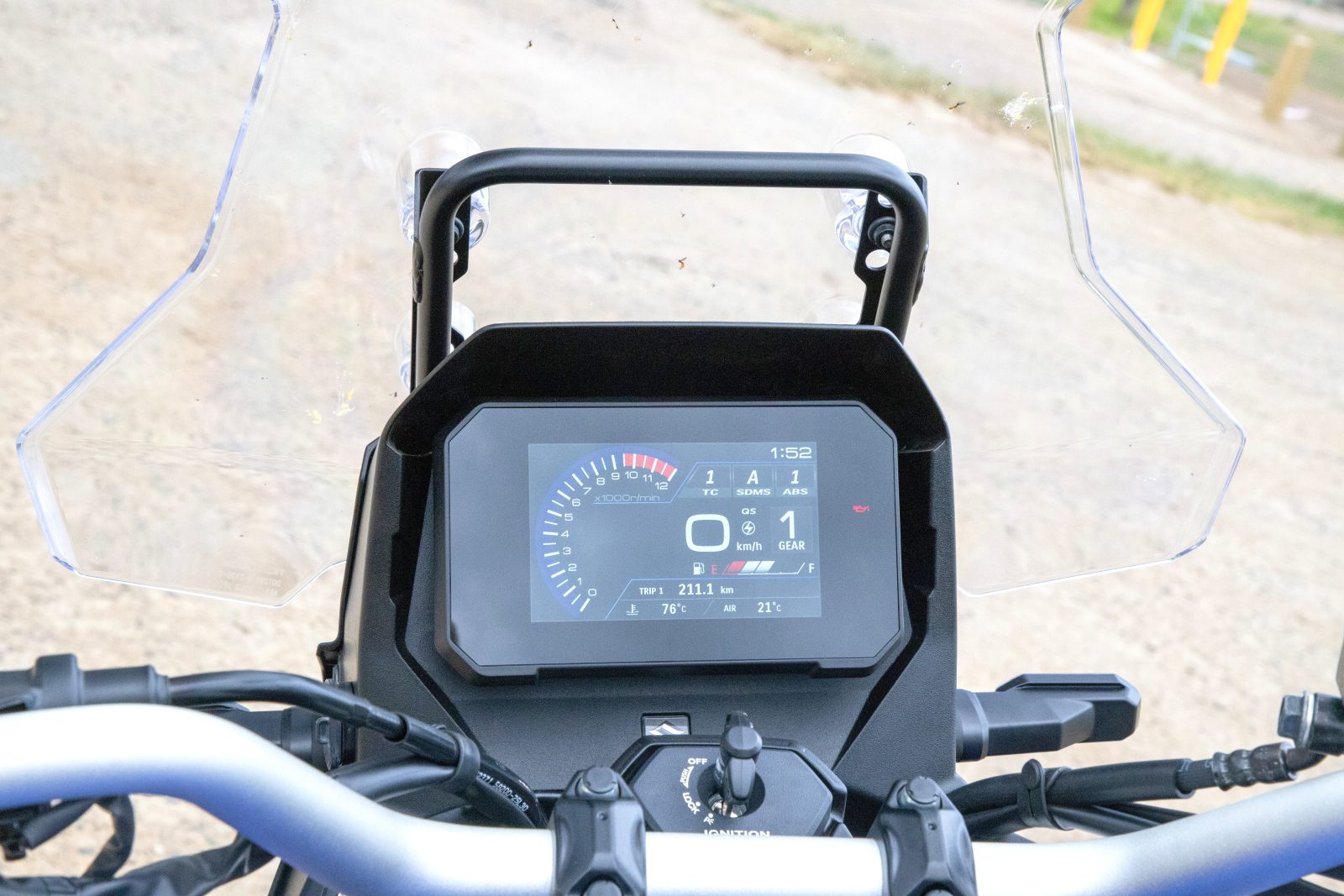
The traction control has three levels of intervention on top of being able to switch it off altogether, which I was surprised to find on the road-oriented model, with other electronic goodies including Suzuki’s Low RPM Assist and Easy Start functions. And there’s a two-way quickshifter as standard fitment, as there should be, which is spot-on.
And that’s what I mean when I said it’s unpretentious and good value. There’s a lot of really useful electronics adorning the V-Strom 800, all of which will be used by and relied on by the rider who has fallen for the Strom’s practicality and accessible price point.
Yes, I still think there needs to be cruise control, but I think the majority of soft-road riders can do without the likes of wheelie, launch, slide, engine brake and whatever else control, and they can certainly do without their associated costs, so I reckon Suzuki has got the balance more or less right. It’s all accessed and actuated through a snazzy five-inch full-colour TFT screen, though it’s not quite snazzy enough to have phone connectivity, though it does have a manually adjustable day and a night mode, alongside a type-A USB outlet to keep your devices charged.
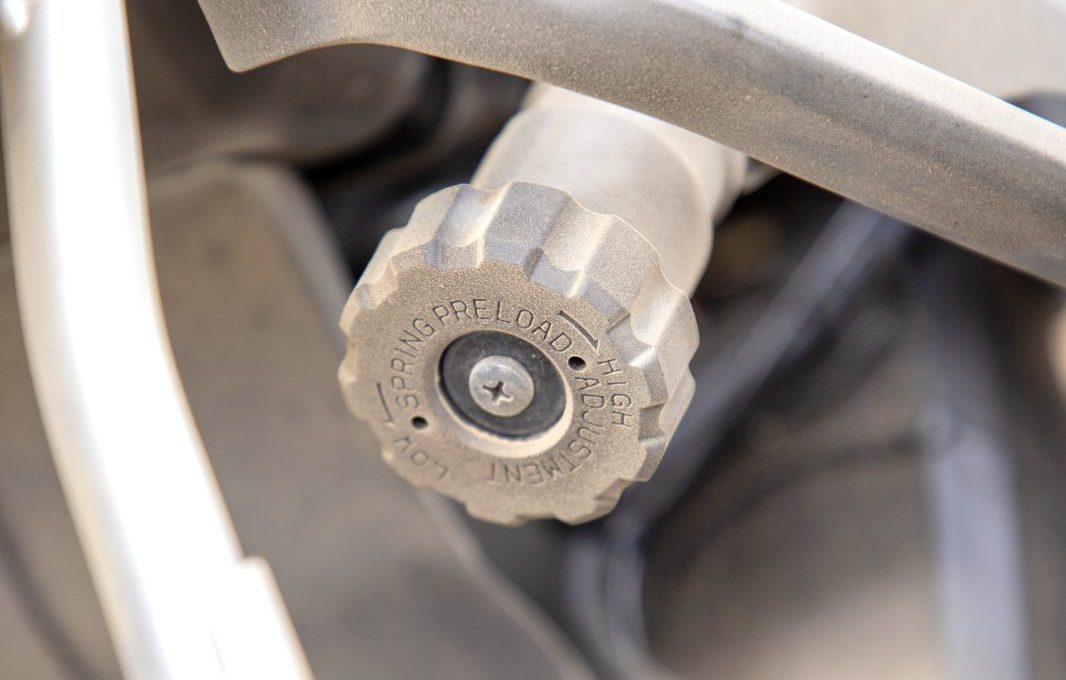
There is a utility bar running above the dash that would be handy to attach a quadlock or navigation system to, although somewhat oddly there is a mounting plate for navigation available in the accessories catalogue that mounts on the handlebar below the dash.
The suspension continues the theme. The fork is Showa’s tried and true Big Piston BFF with adjustable preload, while the matching rear offers both rebound and preload adjustability – complete with a remote preload adjuster mounted above the rear pillion peg – to allow easy and realistic set-up based on the people or luggage that may or may not be on board.
I found the seat to be really comfortable, even after a few hours. Suzuki says the foam used in it is more dense than the DE’s because of the more time you’ll spend sitting down. The tank has 20 litres of capacity and over the 650-odd kays I put on the Strom, I returned an average consumption figure of 4.5L/100km, meaning the Strom’s good for well over 400km between fill-ups.
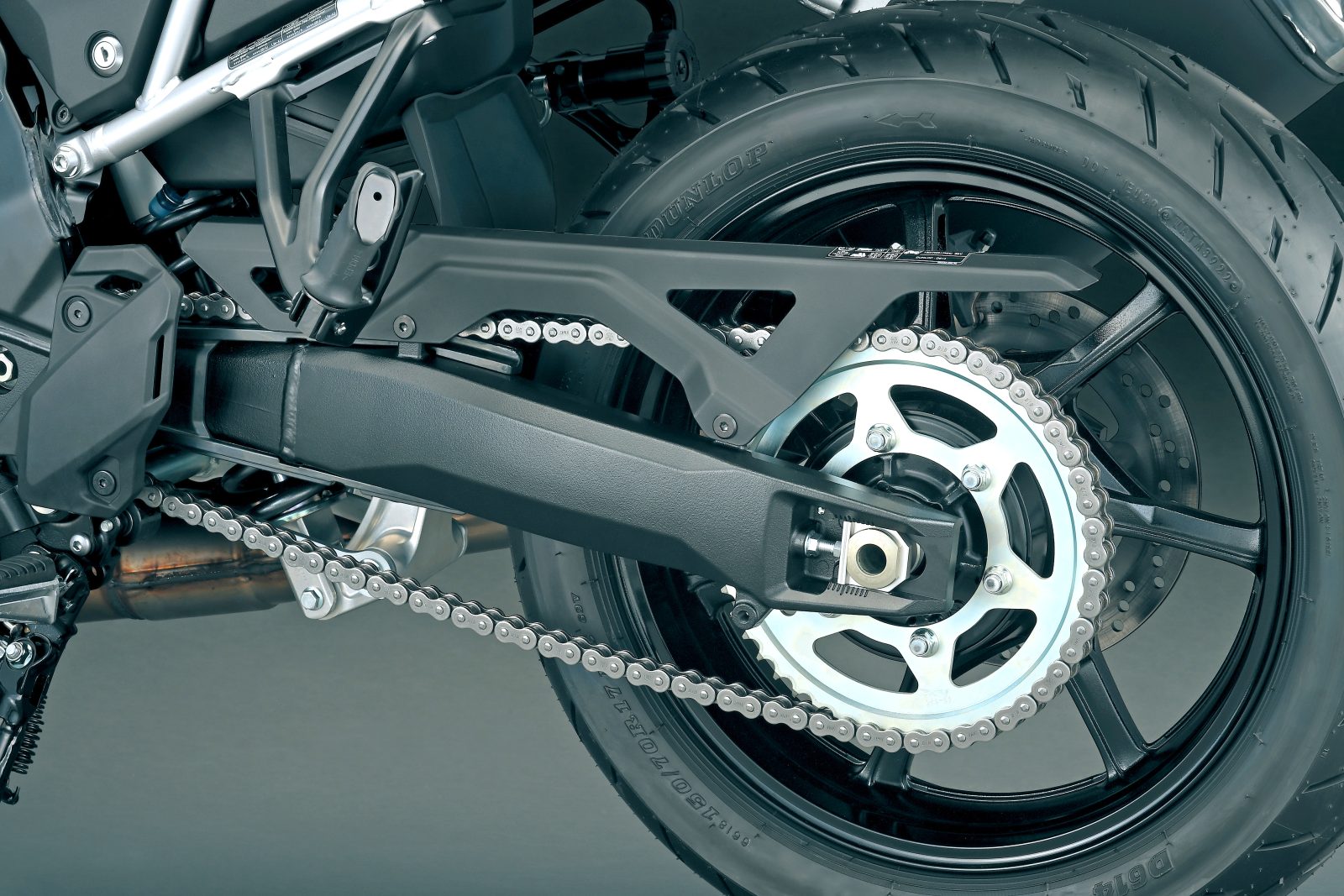
I am probably a little too short to get the most from the base model’s standard ergonomics, though. A comfortable reach to the ’bar required me sitting forward on the narrowest section of the seat. I found the seat itself to be wider and more supportive if I pushed my bum farther back, but then I’d feel it in my shoulders after a while when forced to reach a little farther to the grips than immediately comfortable. If I owned the bike, I would spend a bit of time adjusting the roll of the handlebar within the risers to find a happier middle ground.
And, really, middle ground is what the V-Strom 800 is all about. Its midsize capacity and its middle-of-the-road design brief makes it hugely versatile, while its 223kg wet weight is by no means at the heavy nor light ends of the adventure-tourer spectrum. When you weigh up its long list of features against its ride-away asking price of $17,495, add the reliability and size of the dealer network that comes with the hugely recognisable badge on the tank, the V-Strom 800 is an honest and practical all-roader that represents terrific value for money.
TEST: KEL BUCKLEY PHOTOGRAPHY: JANETTE WILSON
PROS: Just enough touring essentials to keep the value-for-money equation spot-on
CONS: Cruise control should be standard and it could do with a tool-less screen adjuster
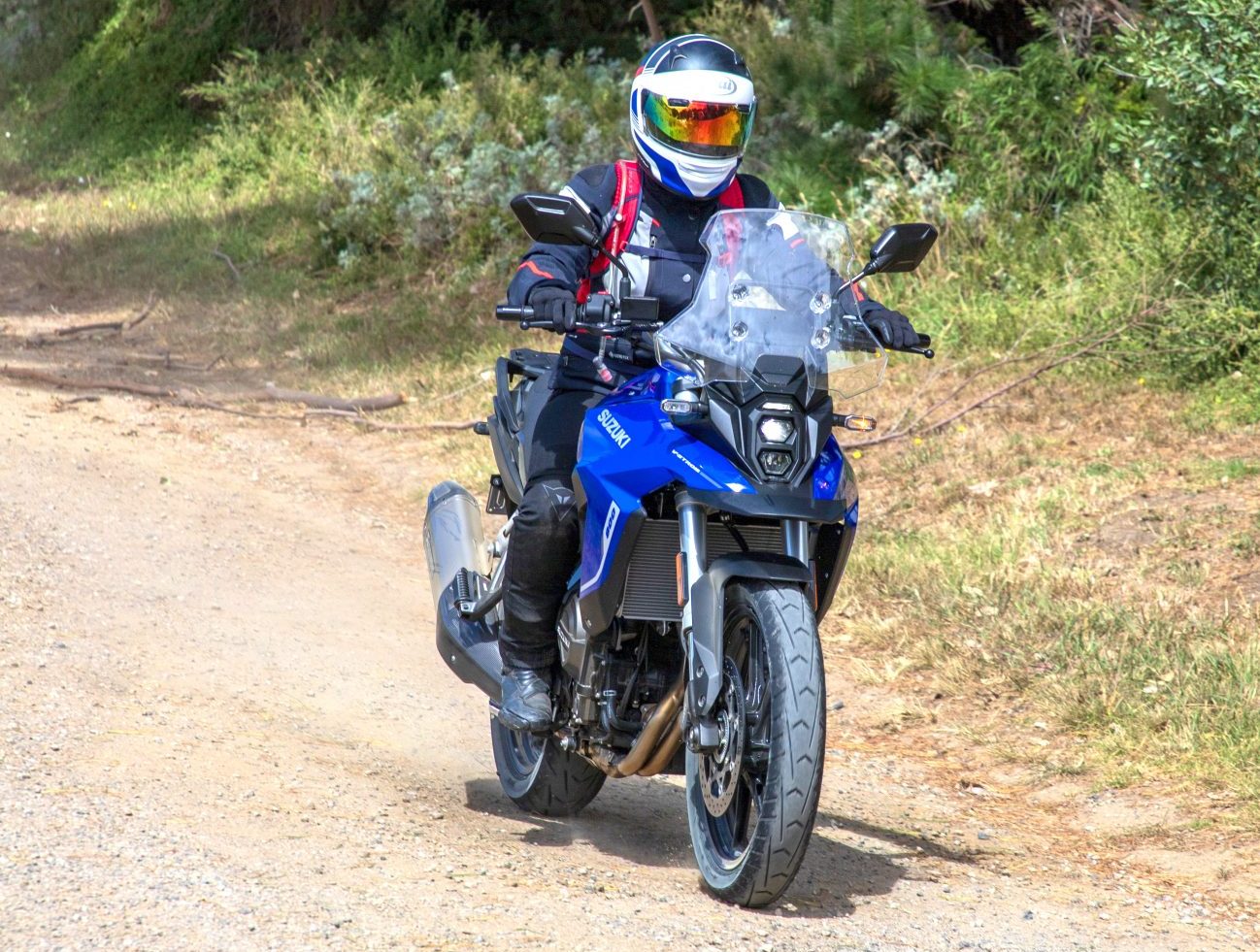
Hidden extras
As well as 12,000km minor and 48,000km major service intervals, if you get your V-Strom 800 serviced at a Suzuki dealer, your two-year warranty period is extended to three years.
Splitting numbers
The standard seat height is 825mm, the wheelbase is 1515mm and it’s 905mm at its widest point, which makes the V-Strom a capable lane splitter when the traffic gets congested.
Take a breather
There’s 78Nm of torque and 62kW (83hp) of power at 6800rpm and 8500rpm respectively, numbers which increase by 1.3Nm and 1.1kW when fitted with the 1.2kg-lighter Akra pipe.
Mile maker
With 20 litres of fuel on board, the V-Strom 800 is good for more than 400 kays in a single stint and the protection, ergonomics and well-padded seat are more than up to the job.
At your service
There’s a good range of electronic rider aids fitted as standard, including a two-way quickshifter, switchable traction control and adjustable ABS. But no cruise control.
SPECS
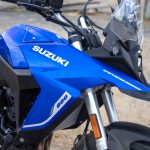
ENGINE
Capacity 776cc
Type Parallel twin, DOHC, four valves per cylinder
Bore & stroke 84 x 70mm
Compression ratio 12.8 :1
Cooling Liquid
Fueling EFI
Transmission Six-speed
Clutch Wet, multi-plate
Final drive Chain
PERFORMANCE
Power 62kW (83hp) @ 8500rpm (claimed)
Torque 78Nm @ 6800rpm (claimed)
Top speed 180km/h (est)
Fuel consumption 4.5L/100km (measured)
ELECTRONICS
Type Suzuki
ABS, Ride-by-wire
Rider aids ABS, traction control, Easy Start, Low RPM assist
Modes A, B & C
CHASSIS
Frame material Steel
Frame type Bridge
Rake Not given
Trail Not given
Wheelbase 1515mm
SUSPENSION
Type Showa
Front: 45mm telescopic fork, preload adjustable, 150mm travel
Rear: Monoshock, adjustable preload and rebound, 150mm travel
WHEELS & BRAKES
Wheels Cast aluminium
Front: 19 x 3.0 Rear: 17 x 4.0
Tyres Dunlop D614F
Front: 110/80R19 (59V)
Rear: 150/70R17 (69V)
Brakes Nissin, ABS
Front: Twin 310mm discs, four-piston calipers
Rear: Single 260mm disc, twin-piston caliper
DIMENSIONS
Weight 223kg (wet, claimed)
Seat height 825mm (claimed)
Width 905mm
Height 1355mm
Length 2255mm
Ground clearance 185mm
Fuel capacity 20L
SERVICING & WARRANTY
Servicing First: 1000km
Minor: 12,000km
Major: 48,000km
Warranty Three years, unlimited km
BUSINESS END
Price $17,495 (ride away)
Colour options Metallic Mat Steel Green or Pearl Vigor Blue
Contact www.suzukimotorcycles.com.au
